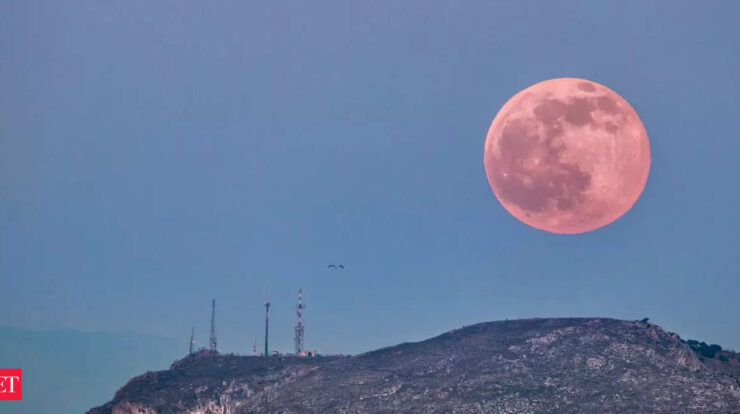
Prepare for the Pink Moon 2024, an astronomical event that promises to captivate skywatchers with its ethereal beauty. This celestial phenomenon, occurring during the spring equinox, holds cultural and historical significance across various societies, inspiring awe and wonder.
The Pink Moon’s influence extends beyond its celestial realm, impacting Earth’s ecosystems, inspiring artistic creations, and fueling scientific research. Join us as we delve into the captivating world of the Pink Moon 2024.
Astronomical Significance
The Pink Moon 2024 holds significant astronomical importance as it marks the first full moon after the spring equinox. This celestial event occurs when the Sun aligns with the Earth and the Moon, with the Moon positioned opposite the Sun in its orbit.
The term “Pink Moon” does not refer to the actual color of the Moon, but rather stems from the blooming of wild ground phlox, a type of flower that typically blooms in North America around this time of year.
Cultural and Historical Context
The Pink Moon has been recognized and celebrated in various cultures throughout history. In Native American traditions, it was known as the “Planting Moon” or “Egg Moon,” as it signaled the optimal time for planting crops and gathering eggs. In European folklore, the Pink Moon was associated with fertility and abundance, and was believed to bring good fortune to newlyweds.
Impact on Earth’s Ecosystems, Pink moon 2024
The Pink Moon’s gravitational influence can have subtle effects on Earth’s ecosystems. During this time, high tides may be slightly higher, and some animals may exhibit changes in behavior. Plant growth may also be influenced by the increased moonlight, particularly in species that are sensitive to lunar cycles.
Observing the Pink Moon
The Pink Moon 2024 will be visible to observers in all parts of the world. The best time to view it will be during moonrise or moonset, when the Moon is close to the horizon and appears larger and more colorful.
To enhance visibility, it is recommended to find a location with clear skies and minimal light pollution.
Artistic and Creative Inspirations
The Pink Moon has long been a source of inspiration for artists and creatives. Its ethereal glow and symbolic significance have been captured in countless works of literature, music, painting, and other art forms. From the romantic poetry of William Wordsworth to the surrealist paintings of Salvador Dalí, the Pink Moon continues to captivate and inspire.
Scientific Research
Scientists have conducted extensive research on the Pink Moon and its effects. Studies have examined its impact on tides, animal behavior, and plant growth. Ongoing research aims to further understand the subtle but intriguing ways in which the Pink Moon influences our planet.
Cultural Comparisons
The cultural significance and traditions associated with the Pink Moon vary across different regions of the world. In China, the Pink Moon is known as the “Flower Moon” and is celebrated with festivals and moonlit gatherings. In Japan, it is called the “Sakura Moon” and is associated with the blooming of cherry blossoms.
Moon Photography
Capturing stunning photographs of the Pink Moon requires careful preparation and technical expertise. Photographers should use a tripod for stability and a telephoto lens to zoom in on the Moon. Manual camera settings allow for precise control over exposure and focus.
Post-processing techniques can enhance the image’s sharpness, color, and contrast.
End of Discussion: Pink Moon 2024

As the Pink Moon 2024 graces our skies, it leaves an enduring legacy of celestial wonder and cultural significance. From its astronomical origins to its profound impact on human societies and the natural world, this celestial event continues to fascinate and inspire.
Common Queries
When is the Pink Moon 2024?
The Pink Moon 2024 will occur on April 10, 2024.
Why is it called the Pink Moon?
Despite its name, the Pink Moon does not appear pink. It is named after the pink-hued phlox flowers that bloom in North America during this time of year.
How can I observe the Pink Moon 2024?
Find a location with clear skies and minimal light pollution. Look towards the east as the moon rises above the horizon.